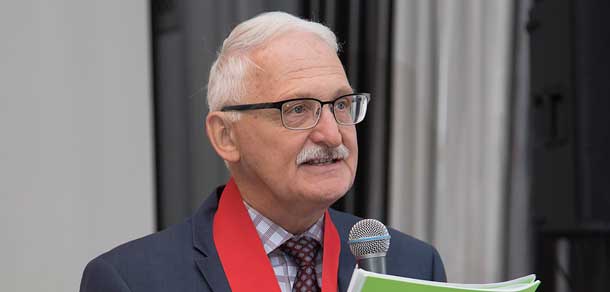As the articles in this edition of the Edge attest, the engineering and geoscience professions offer satisfying careers, a platform for meaningful work, a chance to make a difference.
So much of our economy and of the things that contribute to a high standard of living would not exist without these professionals. Because of the privilege afforded those who become engineers and geoscientists and because of the importance of the work these professions do, it is imperative that there be no artificial barriers limiting the inclusion of any individuals who have the talent and who would aspire to be a professional engineer or geoscientist.
The membership of APEGS is not as diverse as one might expect based on demographics. Women and men participate nearly equally in many other STEM-related disciplines (e.g. medicine, pharmacy, agrology, biology), yet women account for fewer than 20 per cent of engineers and geoscientists in Saskatchewan and Canada. The number of Indigenous persons studying in Canadian universities across all disciplines is steadily increasing but participation in physical sciences and engineering is lagging. Apparently there are reasons not related to their individual abilities and potential that inhibit the full participation of some talented individuals.
Diversity refers to any characteristics that differentiate amongst individuals – the familiar ones like race, gender, age, sexual orientation and physical abilities, as well as a host of other characteristics such as ethnicity, socio-economic status, spirituality and family support. Inclusivity exists when diverse individuals feel respected, when there is a culture within organizations of explicit inclusion, when there is equitable access to jobs, to leadership positions and to professional development opportunities.
It will require collaborative, persistent and systematic attention by many (including families, communities, the K-12 education system, post-secondary institutions, business leaders, employers and individual engineers and geoscientists) to knock down the barriers to full inclusion of diverse individuals. For its part, APEGS can make sure that our regulatory processes are free of bias, that our processes for recruiting and electing volunteers are sensitive to diversity, that our staff office is itself an inclusive workplace.
Among the 94 calls to action articulated in the final report of the Truth and Reconciliation Commission are the calls for teachers, students and professionals to engage in “skills-based training in intercultural competency, conflict resolution, human rights and anti-racism.” We are called to an awareness of the inclusive history of the diverse Indigenous peoples of Canada, to the faithful observation of the treaties with Indigenous peoples and to the imperative for engaging respectfully with Indigenous communities in economic development projects. We are called to develop our personal and professional capacity for “intercultural understanding, empathy and mutual respect.”
Engineers Canada initiated the “30 by 30” program specifically to address the persistent under-representation of women in engineering. APEGS identified a “30 by 30” champion in the person of Margaret Anne Hodges, P.Eng., FEC and created a “30 by 30” task group to give direction and focus to initiatives seeking to increase the proportion of women in APEGS to at least 30 per cent by 2030.
Among its many early accomplishments, this task group is responsible for a half-day program at the upcoming PD days in March, entitled “Watch out for unconscious biases: If I looked at the world in a different way . . . ” which will be a terrific opportunity for our members to examine implicit bias and to understand privilege conferred upon those who are among the majority.
“Project RISE – Realizing Identity-Safe Environments” is a multi-year research initiative involving four Canadian universities. The initiative includes industry partners in STEM fields who voluntarily hold workshops and engage their employees in reflections on implicit bias, as well as personal responsibility to create inclusive workplaces. This program stands out for me because it demonstrates the opportunity and necessity for each of us and our employers to be part of the crucial changes that will result in engineering and geoscience becoming more diverse and fully inclusive professions.
